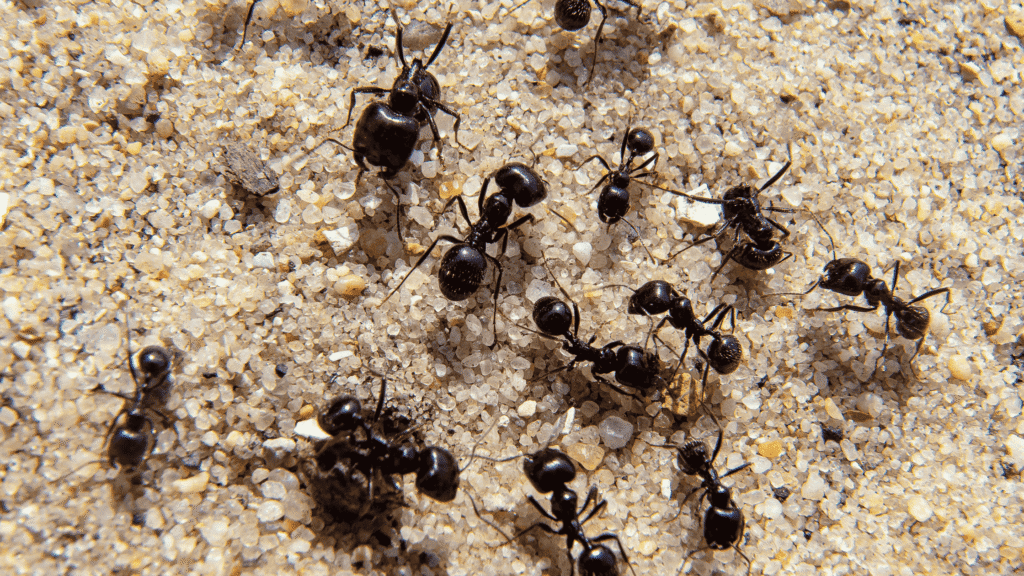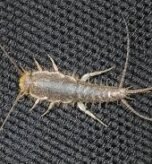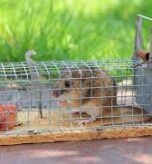
People frequently encounter ants ubiquitous inhabitants of diverse ecosystems, in both natural landscapes and domestic environments.. While often perceived solely as household nuisances, these highly organised insects play multifaceted roles within ecosystems, offering significant benefits even as they occasionally become problematic. This comprehensive guide aims to elucidate the complex biology of ants, their ecological contributions, and effective management strategies when their presence becomes undesirable.
Ants: The Unsung Heroes of Your Garden and Beyond
Many species of ants, particularly the common black garden ant (Lasius niger), contribute substantially to environmental health and garden productivity. Understanding these benefits can inform a more balanced approach to ant management.
Plant Guardians
Ants seek out the nectar found on buds and at the bases of flowers. In this pursuit, they inadvertently protect plants by attacking destructive insects such as herbivores and seed-seeking pests, causing them to dislodge from plants or disrupting their feeding and egg-laying processes. This natural pest control can effectively manage insect populations.
Seed Spreading
Black garden ants play a vital role in seed dispersal, aiding in the propagation of new plant growth. Certain wildflower species, for instance, rely exclusively on ants for the distribution of their seeds.
Protection from Other Pests
Beyond direct plant protection, some ant varieties exhibit predatory behaviours, actively seeking out and consuming garden pests, including fly larvae, fleas, and even some aphids. This function mirrors the pest control services provided by beneficial insects like ladybirds, though ants typically receive less recognition for it.
Beneficial Pollinators
As ants forage for food, they spread pollen from flower to flower, thereby acting as effective pollinators, much like bees.
Soil Health Enhancers
Ants engage in extensive tunnelling activities, moving significant amounts of soil. This process aerates and oxygenates the soil, facilitating easier root penetration for plants. Furthermore, ants consume dead insects and fungi, breaking down organic matter and releasing essential nutrients, which consequently enriches the garden soil.
Essential Part of the Food Chain
Black garden ants form a crucial link in the food chain, serving as a food source for a variety of animals, including birds, spiders, fish, frogs, lizards, other insects, and even certain mammals. Their presence thus supports the broader ecosystem.
When Ants Become a Nuisance: The “Foe” Aspect
Despite their ecological benefits, ants can become problematic, particularly when their populations are unchecked or when specific species cause damage.
Aphid Farming
A significant drawback of ants in gardens is their mutualistic relationship with aphids. Ants “farm” aphids for their sugary honeydew secretions, protecting them from natural predators like ladybirds and wasps. This protection can lead to an increase in aphid populations, potentially causing damage to plants and reducing crop yields. Unchecked ant populations can also disturb germinating seeds in gardens.
Structural Damage
While most ants are harmless to structures, carpenter ants are a notable exception. These ants excavate tunnels in wooden structures, such as homes, sheds, and foundations, to build their nests. This activity can result in significant structural damage to timber.
Bites and Stings
Of the over 12,000 ant species worldwide, most are harmless to humans. However, some species, such as fire ants (Myrmica rubra), can deliver painful stings that cause a burning sensation, swelling, and blisters. While black garden ants can bite, their bites are typically weak and painless for most individuals, as they do not inject venom. Symptoms of ant bites or stings can range from mild redness, swelling, and itching to more severe allergic reactions, including nausea, sweating, and low blood pressure. It is important to distinguish between a bite (pinching with mandibles) and a sting (injecting acid or venom with a stinger, generally by female ants).
Disruption in Masses
Even otherwise beneficial ants can become a nuisance if their populations grow excessively large. Large numbers of ants can disrupt garden activities and may chew through plant roots, stunting growth and increasing susceptibility to disease.
Potential for Contamination
Ants entering homes, especially if they have travelled through unsanitary areas, can potentially spread contamination and bacteria. For instance, pharaoh ants (Monomorium pharaonis) are known carriers of pathogenic bacteria such as Salmonella and Staphylococcus.
Ant Biology and Behaviour: What Makes Them Tick?
Understanding the life cycle and behaviours of ants provides insight into effective management strategies.
Life Cycle and Colony Structure
Ants undergo a four-stage life cycle: egg, larva, pupa, and adult. Colonies are typically headed by a single queen (monogynous), though some species can have multiple queens. A black garden ant queen (Lasius niger) can live for up to 15 years, with some recorded instances of up to 29 years, making it one of the longest-lived eusocial insects. Worker ants generally live for a few months, but can survive for at least four years in laboratory conditions. Queens sustain themselves during initial egg-laying by digesting their wing muscles and may even consume their own eggs or infected larvae to recycle nutrients and defend against fungal infections.
Communication and Foraging
Ants utilise scented pheromone trails to navigate to food sources and back to their nests. They are highly attracted to sweet and starchy foods, such as sugar, honey, and cornmeal.
Adaptation to Urban Environments
Urbanisation can significantly influence ant behaviour. Studies indicate that common black garden ants (Lasius niger) in more urbanised areas may defend aphids more aggressively. This heightened aggression is likely a response to increased competition for limited and unpredictable food resources in fragmented urban habitats. Lasius niger workers demonstrate flexible task allocation and behavioural plasticity, crucial for colony success in dynamic urban settings. Urban ants may adopt “discovery-defence” strategies to secure food resources, linking aggressiveness with foraging activity.
Quarantine Behaviour
Ant colonies are structured to minimise disease transmission by segregating communities within the nest. Infected ants have been observed spending more time foraging outside the nest and limiting internal interactions, potentially isolating themselves to protect the colony.
Effective & Sustainable Ant Management Strategies
When ant populations require management, various strategies can be employed, prioritising natural and sustainable methods where possible.
Prevention is Key (First Line of Defence)
Preventative measures are the most effective way to deter ants.
• Eliminate Food Sources: All food, especially sweet and starchy items, should be stored in tightly sealed containers or plastic bags. Dishes should be washed immediately, and crumbs cleaned daily from all areas, including under appliances and in refuse bins. Pet food bowls should also be cleaned promptly after use.
• Clean Surfaces Regularly: Daily cleaning of kitchen surfaces and floors is essential to discourage ants.
• Seal Entry Points: Inspect and seal cracks in walls, holes near floorboards and radiators, and rips in window screens. General maintenance, such as sealing cracks and crevices in door and window frames, reduces potential entry points.
• Outdoor Maintenance: Keep yards free of debris and cut back any vegetation that touches the house, as these can serve as ant access routes.
Natural & Non-Toxic Control Methods (DIY Solutions)
For existing ant presence, several natural methods can be employed.
Pheromone Trail Disruption
Ant pheromone trails, which guide ants to food, can be disrupted. A mixture of glass cleaner and liquid detergent or any soapy water can be sprayed to remove these trails. A 1-to-1 mixture of white vinegar and water can clean hard surfaces effectively; ants can detect the vinegar even after it dries, though the human scent dissipates quickly. Lemon juice or rinds can also deter ants and mask food scents.
Repellents
Various natural substances can act as repellents:
• Ground Pepper: Sprinkle ground black or red (cayenne) pepper around baseboards, behind appliances, or directly into opened nests.
• Essential Oils: Mix 10-20 drops of peppermint essential oil with water for a spray, ensuring it is kept away from pets, especially cats. Tea tree oil (5-10 drops in 2 cups water) or a blend of tea tree and peppermint can also be used. Lemon eucalyptus oil (undiluted on cotton balls) or cinnamon leaf essential oil are also effective.
• Coffee Grounds: Freshly brewed coffee grounds can repel household ants; place them on disposable surfaces and change frequently as they lose potency when dry.
• Neem Oil: Effective around plants, particularly where aphids are present, as ants farm aphids. Neem oil reduces insect feeding, repels insects, and prevents reproduction.
Direct Elimination/Control
For direct elimination or control:
• Boiling Water: Pour directly into ant holes or nests to kill many ants instantly. Repeated applications may be necessary to affect the entire colony.
• Cornstarch: Pour liberally over ants and add water to encase them, or vacuum them up and immediately dispose of the sealed bag outdoors.
• Diatomaceous Earth (DE): Food-grade DE kills ants by dehydrating their exoskeletons. Sprinkle where ants are seen. Caution: Avoid inhalation or skin contact, and be aware it can harm beneficial insects like bees.
• Borax/Boric Acid: Create a solution (1/2 tsp borax/boric acid, 8 tsp sugar, 1 cup warm water) for cotton balls or DIY traps. Crucial Safety Note: Keep borax and boric acid away from pets and children due to ingestion hazards.
• Organic Insecticidal Soap: Spray problem ants to eliminate or disorient them.
• “Ant Bait” (Natural/DIY): Instead of killing visible ants, place bait (e.g., borax solution with sugar) along their trail for them to carry back to the nest, destroying the colony over about a week. Note: Do not use bait traps with residual sprays or powders.
• Solarisation with Plastic Covers: Place black plastic items (cups, bottles, buckets, pie pans, trash bags, pond liner) over ant mounds in sunny areas. This creates an extremely hot (110-130°F) and dry environment, forcing ants to abandon nests. Black items are preferable for heat absorption, and covers prevent rainwater, further dehydrating ants. Temporary grass damage can be restored with composted manure and avoiding mowing the spot. Transplanting nests to new sites and treating the bases with repellents can also be an efficient method.
When to Consider Commercial/Professional Control
If natural options are insufficient, pesticides and commercially prepared products may be considered.
• Commercial Repellent Sprays: Products like Raid contain chemicals effective on ants, though inhalation or ingestion should be avoided.
• Bait Traps: These attract ants to consume bait, which they carry back to the nest to eliminate other ants. Some contain boric acid/borax, while others use chemicals like hydramethylnon, which can be dangerous for children, pets, or food plants.
• Professional Exterminators: Recommended for severe or persistent problems. It is advisable to inquire about their methods, especially if preferring green or eco-friendly products, or if there are concerns about children, pets, or respiratory health.
Conclusion: Coexisting with Ants in an Informed Way
Ants, while occasionally a nuisance, are integral to healthy ecosystems. Many species are harmless and provide valuable services, from soil aeration and nutrient recycling to pollination and pest control. Understanding their biology and behaviour enables informed decisions regarding their presence.
By implementing preventative measures and, when necessary, employing sustainable management strategies, it is possible to coexist with ants effectively. Ultimately, maintaining a clean home and garden environment is fundamental to preventing future ant infestations



